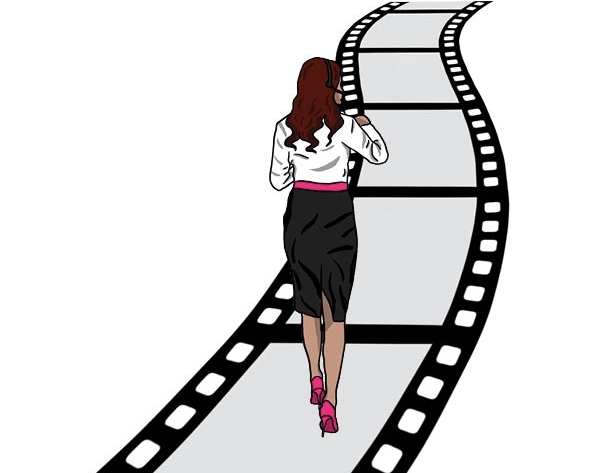Considering most moviegoers are women, why are they deprived of representation in front of and behind the camera?
Only 7% of movies in the United States in 2021 featured more female than male characters, according to research by Martha M. Lauzen, founder and executive director of the Center for the Study of Women in Television and Film. However, in America, women make up a larger share of moviegoers than men, with 2 million and 1.7 million weekly theater admissions respectively, according to a study from Vertigo Entertainment Marketing Research.
Men dominate the film industry on and off screen. Even though 51% of the United States population are women, they only make up 31% and 20% of behind-the-scenes workers members on film and television crews, respectively, according to Women in Film, an advocacy organization.
Welcome to WIFSFBA
Women in Film San Francisco Bay Area, a volunteer-run nonprofit, has sought to tackle this issue since 2001. Carol Hall, the organization’s volunteer chairperson and treasurer, said that the organization was created to address issues unique to women and non-binary people in the film industry and allow more opportunities for connection and networking.
“Historically, women have been second-class citizens in the film and media industry,” Hall said. “It [WIFSFBA] started as a result of women not being able to have the same opportunities as men. The women [members] come together to support each other, to help each other in their careers and it just provides a safe place for women and non-binary people to get together and … get advice on how to make their work better.”
Hall said that recent advancements have helped women find a stronger place in the film industry and feel more empowered. According to Hall, #MeToo, a movement in which many women came forward about their experiences with sexual harassment and assault, played a role in allowing more women to stand up for themselves in the workplace.
“Because #MeToo happened a few years ago, women are not taking that kind of stuff [workplace abuse] anymore,” Hall said. “They are trying to be able to advance in their careers and not have to worry about somebody asking them for favors.”
Shaping the Stanford scene
Locally, the Stanford documentary filmmaking program is taking steps to feature female voices in its work. Shirley He, a Stanford master’s student in documentary filmmaking, is in a six-student cohort of documentary filmmakers. When He started her studies, she found the way she was perceived as a woman in the film industry was significantly different than her male peers. According to He, women in her field often doubt the quality of their work and ideas compared to that of their male coworkers.
“There’s this inherent unbalanced gender hierarchy between men and women, traditionally,” He said. “Historically, men are dominating figures in filmmaking and film industry. One thing that affects me the most is inherently feeling that my voice doesn’t matter as much as someone else’s, particularly that of the white, male peer.”
He said that she believes that the issue of underrepresentation of women in film is not talked about enough.
“Here in America, there should be continued conversation around gender imbalance and hierarchy,” He said.
Film at Paly
Palo Alto High School senior Eloise Dumas, who plans to work in the film industry, said that the lack of well-developed female characters impacts her enjoyment of a movie.
“It’s so weird that there are still so many male-centric storylines,” Dumas said. “I feel like I lose interest in movies that are just all men all the time and then there’s a woman for five seconds, but she’s either the love interest or a mother and she doesn’t really do things.”
Paly Film Club seeks to create an environment in which Paly film lovers can come together and discuss elements of their favorite films. Co-president Kaliope Hendershot said that the club makes an effort to incorporate films from a diverse range of directors.
“We [the co-presidents] realized how little representation there is in the [film] industry,” Hendershot said. “We try to focus on underrepresented peoples and movies as much as we can.”
Hendershot said she hopes to shed light on more female directors during club meetings in the future.
“It would be interesting to center the conversation around what movies we enjoyed by female directors,” Hendershot said.
As more opportunities begin to open up for women in traditionally male-dominated creative fields, He thinks that it is important to let younger students know that they should stay strong in their beliefs.
“Be confident in your voice and what you want to say and don’t be discouraged by what you are trying to tell yourself,” He said. “Ensure that your voice is heard. The story that you think is important matters.”




